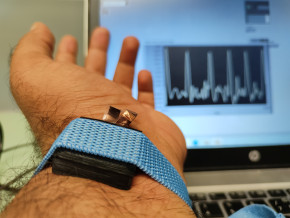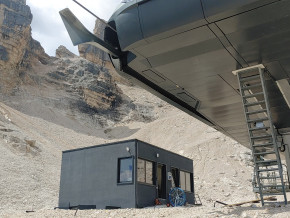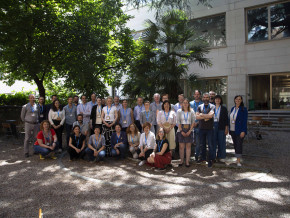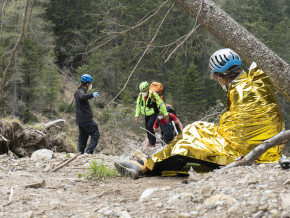Keeping the Sun Shining
You’ve just had shiny new photovoltaic modules installed on your rooftop, and they’ve started piping electricity into your home. That’s all there is to it, right? Maybe not. David Moser tells us how the Solar Bankability project crunched the data on the potential risks of PV plants to demonstrate how to improve their performance over their lifetimes.
Solar energy seems now like it is the “next big thing”, after it was heralded as the “next big thing” back in the 1990s. What took it so long?
Moser: We needed to have a few things going at the same time to get to this point: first, policies that promoted renewables at the country and EU level, like the 2020 targets, for example. Secondly, we needed economic incentives to encourage industry and homeowners to install PV plants. And thirdly, we needed to reduce the cost of the plants themselves. There is a rule in the industry that when you double the worldwide cumulated module production, you decrease its cost by around 25%. As the technology has improved, we’ve seen massive cost reductions over the lifetime of PV plants.
What is their lifetime?
Moser: The standard response is 20 years, but this is a very artificial number because the business model was based on initial economic incentives that lasted for a limit of 20 years. There are some plants which have been in operation for more than 30 years.
These economic incentives dried up in Italy in 2013. When a homeowner installs a PV plant now, one of their first questions might be: “Will I ever make my initial investment back?”
Moser: The short answer is ‘yes’. With large PV plants, the return on investment depends on the framework of how the electricity is valorised, and this is more complex. The private homeowner will see reduced electricity bills rather than actual income. It’s now possible to produce energy at a lower cost over the lifetime of a PV plant than what you would spend in the same period getting your energy from the grid, and this is a fact anywhere in Europe.
As manager of the Solar Bankability Project for Eurac Research, your team was trying to quantify the risks that impede the return on investment. What did you find?
Moser: There are many potential technical failures for PV plants: incorrect installation, glass breakage, hotspots caused by cells working at higher temperatures, soiling of the panels from dust and pollution, ‘snail tracks’ which are an indication of the presence of cell cracks, rodents that eat through the electrical cables, and so forth. We tried to quantify the economic impact of these potential failures and then propose strategies to help the different actors in solar energy provision make informed investment decisions.
Can this help the average homeowner who wants to install solar panels?
Moser: These same technical risks can be there for smaller systems, but they are generally not detected until it is too late.
Why is that?
Moser: Large PV plants typically (but surprisingly, not always!) have built-in monitoring systems and maintenance packages that would be too expensive to include in smaller PV plants. The challenge is that unless there is constant monitoring of what is happening with a PV plant, the problems are unlikely to be detected in time, and this can have a negative impact on cost-efficiency over the lifecycle of the plant.
What can we do to avoid them?
Moser: We propose effective preventive measures: for instance: make sure you have certified or qualified installers, and for small PV plants, get proposals from two or three installers to compare their designs. There are also cheaper basic monitoring systems on the market for residential plants. We are not suggesting that residential owners can create a risk-free set up because that would cost too much, but at least they should have a certain regard for quality components and installers. What can seem like an added cost in the moment can save you money in the future. It’s like insurance—it might seem like a waste of money at first, but you’re sure happy you have it when something goes wrong.
David Moser (PhD in physics). He is responsible for the research group “Photovoltaic Energy Systems” at Eurac Research’s Institute for Renewable Energy. Coordinator of the EU H2020 projects Solar Bankability on the economic impact of technical risks in PV projects. Coordinator for EURAC of the activities within the IEA PVPS Task 13 “Performance and Reliability of PV modules and systems”. He is member of the board of directors of EUREC and member of the European PV Technology and Innovation Platform Steering Committee.
Related Articles

Tecno-prodotti. Creati nuovi sensori triboelettrici nel laboratorio di sensoristica al NOI Techpark
I wearable sono dispositivi ormai imprescindibili nel settore sanitario e sportivo: un mercato in crescita a livello globale che ha bisogno di fonti di energia alternative e sensori affidabili, economici e sostenibili. Il laboratorio Sensing Technologies Lab della Libera Università di Bolzano (unibz) al Parco Tecnologico NOI Techpark ha realizzato un prototipo di dispositivo indossabile autoalimentato che soddisfa tutti questi requisiti. Un progetto nato grazie alla collaborazione con il Center for Sensing Solutions di Eurac Research e l’Advanced Technology Institute dell’Università del Surrey.

unibz forscht an technologischen Lösungen zur Erhaltung des Permafrostes in den Dolomiten
Wie kann brüchig gewordener Boden in den Dolomiten gekühlt und damit gesichert werden? Am Samstag, den 9. September fand in Cortina d'Ampezzo an der Bergstation der Sesselbahn Pian Ra Valles Bus Tofana die Präsentation des Projekts „Rescue Permafrost " statt. Ein Projekt, das in Zusammenarbeit mit Fachleuten für nachhaltiges Design, darunter einem Forschungsteam für Umweltphysik der unibz, entwickelt wurde. Das gemeinsame Ziel: das gefährliche Auftauen des Permafrosts zu verhindern, ein Phänomen, das aufgrund des globalen Klimawandels immer öfter auftritt. Die Freie Universität Bozen hat nun im Rahmen des Forschungsprojekts eine erste dynamische Analyse der Auswirkungen einer technologischen Lösung zur Kühlung der Bodentemperatur durchgeführt.

Gesunde Böden dank Partizipation der Bevölkerung: unibz koordiniert Citizen-Science-Projekt ECHO
Die Citizen-Science-Initiative „ECHO - Engaging Citizens in soil science: the road to Healthier Soils" zielt darauf ab, das Wissen und das Bewusstsein der EU-Bürger:innen für die Bodengesundheit über deren aktive Einbeziehung in das Projekt zu verbessern. Mit 16 Teilnehmern aus ganz Europa - 10 führenden Universitäten und Forschungszentren, 4 KMU und 2 Stiftungen - wird ECHO 16.500 Standorte in verschiedenen klimatischen und biogeografischen Regionen bewerten, um seine ehrgeizigen Ziele zu erreichen.

Erstversorgung: Drohnen machen den Unterschied
Die Ergebnisse einer Studie von Eurac Research und der Bergrettung Südtirol liegen vor.
